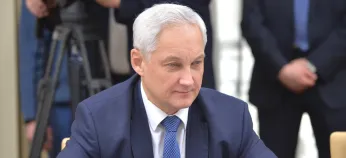
The ruble suffers its worst week of 2023
Just under a year ago, the Russian ruble was named the best performing currency in the world. As a result of currency controls introduced by the Russian authorities and a sharp drop in import volumes, it rose in value after the invasion of Ukraine to levels not seen since 2014. Now, however, those boom times are gone. Last week, the ruble fell five days in a row.
- Despite the unexpected recent announcement by oil cartel OPEC+ that they were suddenly cutting production — triggering oil price rises — the Russian currency in April has been displaying the worst dynamics of any developing world currency. There are likely several reasons for the ruble’s fall.
- Above all, it seems to have been caused by oil major Shell exiting the huge Sakhalin-2 gas project. The company is not only set to take out more than $1 billion in assets from Russia, but also claim part of its dividend. In pre-war times, the Russian currency market would barely have reacted to such an outflow. Cut off from global financial systems as a result of the Ukraine war, however, it is suffering from greatly reduced liquidity.
- The ruble’s problems may also be linked to new budget rules introduced in January. Budget rules are the mechanism Russia uses for distributing revenues from commodity exports. If oil and gas revenues go above a certain level, Russia purchases Chinese yuan with the surplus. If revenues are lower, Russia sells yuan to support the ruble.
- It emerged on Wednesday that, this month, the Finance Ministry reduced sales of the yuan by about 40% because of a rise in oil and gas revenues the previous month. Against a backdrop of a shortage of yuan in the banks, this could further weaken the ruble, according to Natalia Orlova, chief economist at Alfa Bank.
- The Russian authorities themselves attribute the falling ruble to a reduction in the inflow of foreign currency from exports coupled with a rise in imports. Finance Minister Anton Siluanov said he hopes that the Russian currency will soon rise due to the growing oil prices. However, there will be some delay before this additional revenue hits the market.
- Analysts are not rushing to revise their forecasts for the rubles despite the turbulent week on the currency market. They still see the ruble rate in 2023 in the region of 75-80 rubles to the U.S. dollar. But the big issue is not the price against the dollar — it’s the volatility. The implied monthly volatility for the ruble (the indicator of how the market anticipates future exchange rate fluctuations) hit 30% last week. That’s significantly worse than toxic third-tier securities or crypto-currencies.
Why the world should care
In one of her first interviews as chairman of the Central Bank, Elvira Nabiullina defined one of the hallmarks of stability as “a strong economy that has a strong exchange rate.” That seems a long way off. In the long term, ruble volatility weakens the currency’s usefulness as a means of saving or making payments — and makes investors very wary.




